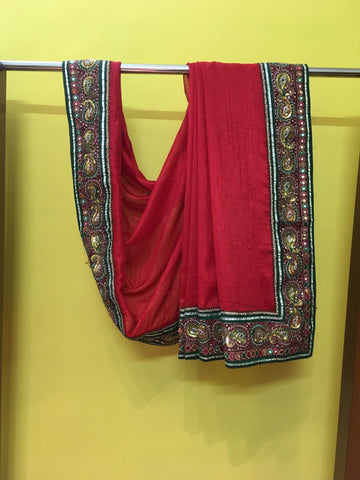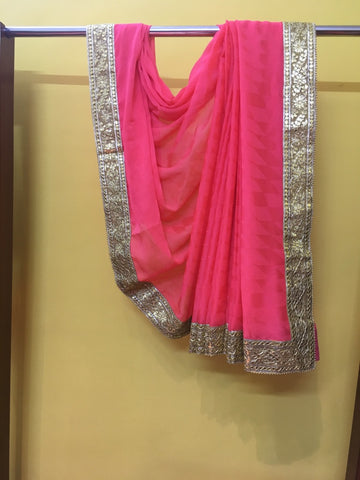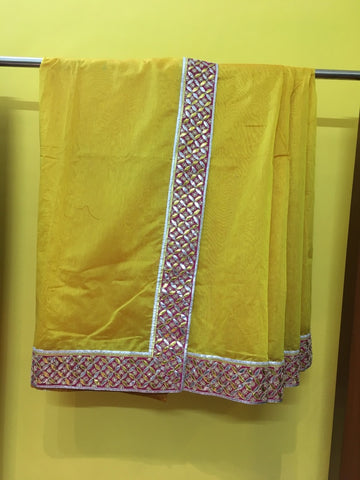Sari
A sari, saree, or shari[note 1] is a female garment from the Indian subcontinent that consists of a drape varying from five to nine yards (4.5 metres to 8 metres) in length and two to four feet (60 cm to 1.20 m) in breadth that is typically wrapped around the waist, with one end draped over the shoulder, sometimes baring the midriff. There are various styles of sari draping, the most common being the Nivi style, which originated in Andhra Pradesh.
The sari is usually worn over a petticoat, with a fitted upper garment commonly called a blouse or choli . The blouse has short sleeves or long sleeves and is usually cropped at the midriff, but can be long to cover midriff. The sari is associated with grace and is widely regarded as a symbol of grace in cultures of the Indian subcontinent.
The word sari described in Sanskrit शाटी śāṭī which means 'strip of cloth' and शाडी śāḍī or साडी sāḍī in Pali, and which was corrupted to sāṛī in modern Indian languages. The word 'Sattika' is mentioned as describing women's attire in ancient India in Sanskrit literature and Buddhist literature called Jatakas. This could be equivalent to modern day 'Sari'.The term for female bodice, the choli evolved from ancient Stanapatta.
Rajatarangini (meaning the 'river of kings'), a tenth-century literary work by Kalhana, states that the choli from the Deccan was introduced under the royal order in Kashmir.
The petticoat is called 'parkar' (परकर) in Marathi, lahaṅgā or lehenga in the north; pavadai (பாவாடை) in Tamil, pavada (or occasionally langa) in Malayalam, Kannada and Telugu, chaniyo, parkar, ghaghra, or ghagaro in the west; and shaya in eastern India.
-Wikipedia









